Here Left, I've added white gesso to some of the glassine bags, and used a 'Tearing Ruler' to create a decorative top to some of the bags.
Here right: are more bags, some I went a bit mad with and created HUGE ones.
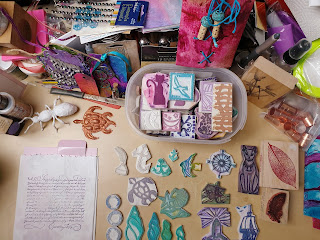 Here I've started decorating some bags, I started by gessoing a bag, then I used a script stamp and you can see that I have lots of other stamps laid out of the desk, I'm thinking about which ones to choose to add to the script stamped bag, I only want a few, but I want to keep to a nautical theme.
Here I've started decorating some bags, I started by gessoing a bag, then I used a script stamp and you can see that I have lots of other stamps laid out of the desk, I'm thinking about which ones to choose to add to the script stamped bag, I only want a few, but I want to keep to a nautical theme.I liked the result, using a bird on its own, a fish, a turtle, a compass, and a postage stamp of a seagull, so then I tried again with a few more stamps.
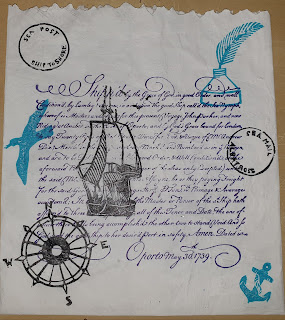
Here I used a sailing ship stamp, the same compass design, a little anchor, the bird again, plus a couple of faux postage cancellation stamps, but with the same script stamp behind it all.
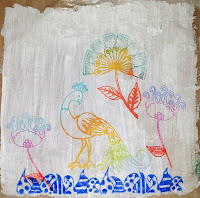 Then I tried a few other things, already stamped tissue, plus some painted raspberry cushioning from a punnet of fruit.
Then I tried a few other things, already stamped tissue, plus some painted raspberry cushioning from a punnet of fruit.Then I used some rainbow ink pads for this peacock:
Then I used some 'Napkin Waste' the unused layers that you may have left after using the thin top layer on another project.
Here I also stamped INTO the Napkin Waste with stamps, the Napkin Waste was fixed in place with Gesso.
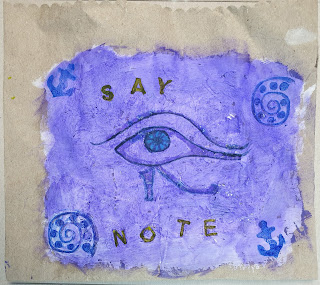
After it had dried I coloured it a lovely blue:
This bag was made from Grey Paper packaging.
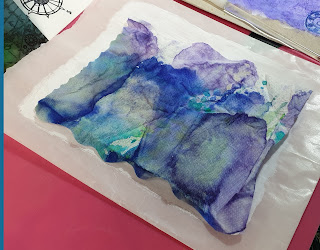
Next I added the top layer from a paper towel I'd used to soak up ink, I got two sheets of this lovely stuff from that paper towel!
So I got two bags from that.
Like mirror images!
The last thing I tried was printing onto Glassine paper. I do NOT recommend this. It made such a mess of my printer that I may now have to buy a new one, so I only have a single example of this:
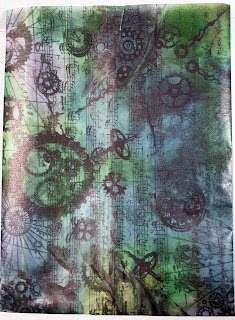
It's very nice, despite where it smeared a bit, but not worth the cost of a new printer.
Not sure what I'll try next, but it's been a lot of fun so far.












